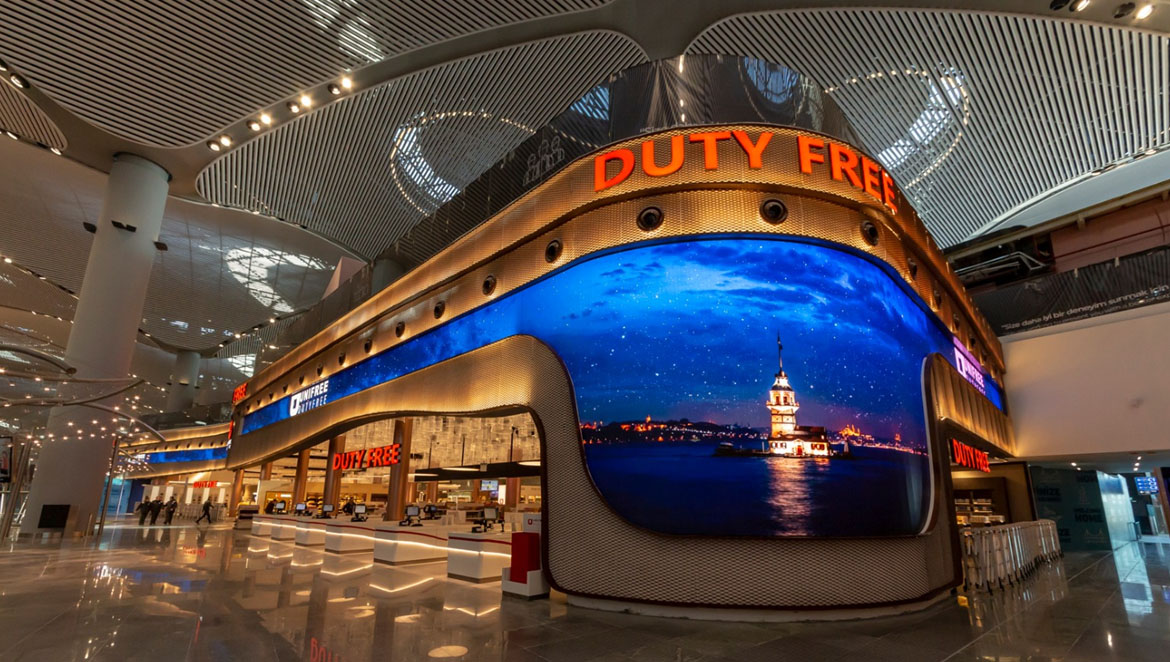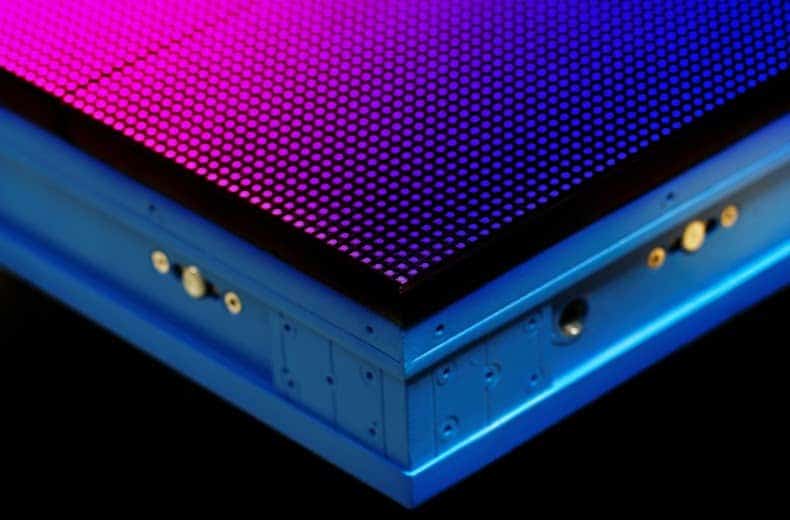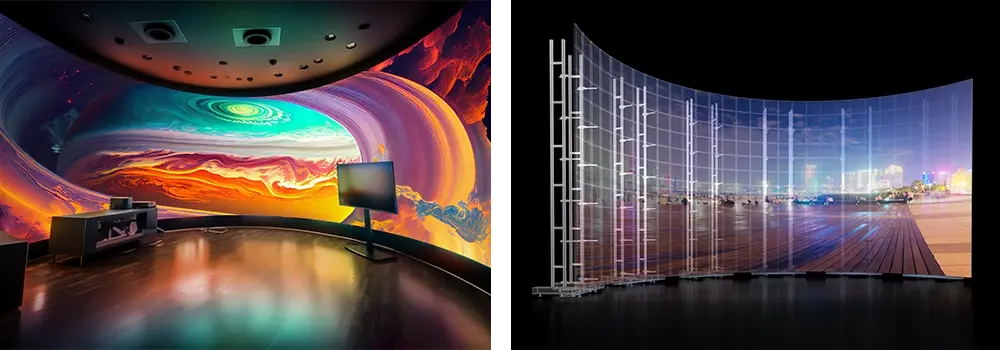Free Advice To Choosing Quality Rental Led Display
Free Advice To Choosing Quality Rental Led Display
Blog Article
What Is The Importance Of Brightness And Contrast Ratio In The Led Display Research?
When researching LED displays the brightness and contrast ratio are crucial factors to take into consideration because they have a significant effect on the quality and clarity of the LED display, particularly in various lighting conditions. The reason they are so crucial:
1. Visibility under a variety of lighting conditions
Brightness is measured in the number of nits or candelas/square meter. It is the determining factor in whether the display will be visible in various lighting conditions. For outdoor displays, where the ambient light can be bright (like direct sunlight), high brightness (typically between 5,000 and 10,000 nits or more) is necessary to ensure that the display is clear and visible. Indoor displays usually require less brightness (between 500 and 1500 nits) but the brightness should be adjustable for different environments.
A high brightness is essential for displays that are installed in brightly lit areas or outdoors. Insufficient brightness can cause the display to be ineffective because the display's content might appear diluted or unreadable when exposed to direct sunlight.
2. Image Quality and Clarity
Contrast Ratio: The contrast ratio is the difference between most white and darkest blacks a display produces. A greater contrast ratio improves the quality of the image, increasing the clarity and sharpness of an image. This is especially important for displays that display motion-based content, like videos or images with high contrast.
Displays with high ratios of contrast are better able to handle content with varying brightness levels. Examples include films and live broadcasts, as well as advertisements. A low contrast display might make dark areas look gray which could reduce the visual impact.
3. Color Accuracy of Visual Impact
Brightness, Color Accuracy Brightness can affect color accuracy. A display that has the correct brightness will better reproduce colors and is crucial in branding, advertising or other content that is based on the integrity of color.
Contrast can enhance the perceived brightness. Even if two screens sport the identical nit rating (or brightness), the one with a higher contrast ratio will look more vivid.
4. Energy Consumption
Brightness and Power Efficiency: Higher levels of brightness typically require greater power. To ensure that you find the ideal balance between brightness and energy efficiency for displays that are utilized 24/7 or are part of a larger-scale installation, it is crucial to take into account both. With the advancements in LED technology, displays now can be more efficient in energy use and provide the highest brightness.
5. Content Versatility
Brightness for different types of content Based on the content type--text static images, text or videos that are dynamic--the specifications for brightness and contrast could vary. Text-based materials benefit from a higher contrast, which ensures easy reading. Video content might require a mix which balances brightness and contrast.
Application: In settings where the type of content changes often (e.g. display screens for advertising or event displays) the ability to adjust brightness and contrast settings can be advantageous, allowing the display to adjust to changing content needs.
6. User Experience
Brightness Adjustability Displays that permit either automatic or manual brightness adjustments can provide superior user experience since they can adjust to the changing light conditions throughout the day. This allows the display to be always visible without creating eyestrain or the appearance of glare.
Contrast and Eye Comfort Contrast and Eye Comfort: A high contrast ratio can help reduce eye strain, making it easier for people to enjoy the contents for longer periods This is essential for public displays, events, or retail spaces.
Conclusion:
The brightness and contrast ratio of a LED display is essential to function effectively in its intended environment. This will ensure that the content is clear, vibrant and easy to read. These factors have an impact on the performance of the display and the visual experience, regardless of whether it is placed inside or outside, in light or dark environments. These elements, in conjunction with the efficiency of energy and content requirements you need to meet, will assist you select the ideal display. Read the best smd screens for site advice including led wall, transparent led panel, led light sign board, led rental screen, advertising displays, screen led display, display led outdoor, led screen panels, flexible led display, led display screen rental and more.
What Is The Importance Of The Refresh Rate When Selecting Led Displays For Your Business?
What is the importance of Refresh rate when researching LED displays? The refresh rate is crucial due to a variety of reasons.
1. Image Smoothness and Clarity
Definition: The refreshrate is the number times per second that the display update the image (measured in Hertz or Hz). A higher rate of refresh is more smooth and decreases flickering.
Importance: For displays showing animations, video content or images that are fast-moving the use of a high-refresh rate (such as 3,840 Hz or more) assures that motion appears smooth and without the stuttering or tear. This is of particular importance in applications like concerts halls, sports arenas and digital signage to can enhance the viewing experience.
2. Flicker-free Performance
Flicker. Displays having low refresh rates produce noticeable flickering. Particularly when viewed through a video camera or slow-motion video. The flickering display can cause fatigue and strain on the eyes. This makes them uncomfortable for long-term viewing.
Application: In settings where the screen will either be captured and film (such as studios for broadcasting) or recorded, such broadcasting facilities or events A high rate of refreshment reduces flickering to ensure that the information is recorded with no visual artifacts.
3. Visual Quality of Different Lighting Conditions
High refresh rates also affect the brightness of the display in different lighting conditions. For instance, if the environment is brightly illuminated with a lot of light, a fast rate of refreshment helps to keep image quality and consistency. This reduces any visible flickering, which can impact the performance of the display.
Applications: This is especially relevant to outdoor displays, stage shows as well as other situations in which lighting conditions change constantly or are difficult to control.
4. Content Compatibility
Synchronization: The rate of refresh must be in sync with the source of content for example, cameras, video playback systems, or live broadcast feeds. If the refresh of the display isn't in line with the frame rate this could result in judder or frames that are mismatched and have an adverse effect on viewing.
Application: To playback seamlessly in professional settings such as large-scale venues or studios for TV, it is crucial to make sure that the rate of refresh matches the frame rate of the content.
5. Get the most enjoyable viewing experience
Motion Handling: High refresh rates can better handle content that is fast-moving, reduce motion blur, and provide a clearer image. This is especially beneficial for applications like sports broadcasting and gaming or any other scenario where high-speed action is displayed.
Event Venues that host games, sports or other events with a lot of action will benefit from a high rate of refresh. This means that the spectators can see each and every detail in clear.
6. Reduced strain on the eyes
Comfort: A low refresh rates can cause eye strain when viewing for extended durations, particularly in situations where people are near the screen or when content is being watched over a long period.
Application: In retail areas office spaces, public areas or other places where people may be watching a display for an extended duration, a fast rate of refreshment can contribute to making the experience more enjoyable and engaging.
7. Performance of Rental and Staging Applications
Flexible: LED displays used for renting or for staging are usually utilized in various settings and with various types of content. A high rate of refresh will ensure that they can be customized to fit any occasion.
Application: High refresh display rates are suitable for these types of environments. They can adapt to the content and audience demands.
Conclusion:
The refresh rates are essential to LED displays. They directly impact the user's comfort, flexibility and quality of the display. It is particularly important for applications involving dynamic content, live events or settings that require the display to be viewed for long periods of time. It is important to prioritize a high refresh rate when researching LED displays to guarantee a smooth, non-flickering performance that will enhance the viewers' experience and meet the specifications for your particular application. Read the top led rental screen for more examples including outdoor screen led, video wall church, video walls, led display rental, tv the wall, led light board, led board, flexible led screen display, digital display, led display transparent and more.
How Important Are Color Accuracy And Calibrating When It Comes To Led Displays?
Color accuracy and calibration are essential when researching LED displays, particularly for applications where quality of image as well as brand integrity are crucial. These are essential due to a variety of reasons.
1. Visual Quality and Realism
Color Accuracy refers to the faithfulness of an LED display in reproducing the colors requested by the content creators. High-quality color accuracy guarantees that videos and images appear real and vivid and appear like they should without distortion or unwanted shifts.
Important: In cases such as broadcasting and advertising as well as professional and retail presentations, a precise colour reproduction is crucial to maintaining visual appeal and effectively delivering the message.
2. Brand Integrity
Consistency of Branding: Color accuracy is vital for companies that rely on specific color schemes to represent their brand. If the colors aren't correct this could harm the brand identity.
Application: To ensure consistent branding across all media such as corporate environments, retail displays, advertising and other platforms, it is essential to ensure that colors are consistent across all platforms.
3. Engaging audiences and their impact
Enhanced Experience for Viewers: Displays with high precision in color can offer a more immersive experience to the viewers. Color accuracy can help convey messages and emotions better and increase the impact of an exhibit.
Application: In places such as museums, entertainment venues and other venues where the goal of the material is to provoke certain emotions, the color accuracy assures that the viewer will experience the content in a planned manner.
4. Content Creator Intent
A faithful representation - Artists designers, and content creators frequently spend a lot of time creating images using particular color palettes. An LED display that can precisely reproduce these colors ensures that their work is presented as intended.
Application: Keeping color accuracy in areas such as photography, digital art and film is vital for the artist's vision.
5. Calibration for Consistency
Uniformity across Panels. Calibration ensures that all the LED panels of a display will show the same color and brightness degree, which eliminates any mismatches. This is particularly important in large-scale displays that comprise several panels.
Regular Maintenance is necessary to maintain the accuracy of color. Even the most sophisticated displays will deviate with time. To ensure consistency and to meet standard of quality periodic calibration is necessary.
Applications for video walls or large outdoor displays as well as multi-panel setups the need for calibration is essential to achieve a uniform and even appearance. This is vital for professional installations.
6. The impact of content types
Different kinds of content: Different types of content require different levels of accuracy in color. Medical imaging displays such as those for medical imaging, need high color accuracy to ensure accurate diagnostics. Displays that advertise may put more emphasis on the quality of their colors and saturation.
Application: In special areas like design, medical imaging, and high-end retail the ability to finely alter the color settings will ensure that the display meets the specific requirements of the material it shows.
7. Technology and Specifications
Bit Depth and Gamut: Displays with high bit-depth and that have wide color gamuts (like DCI-P3 and Rec. 2020 ) can provide a wider spectrum of colors as well as more accurate color. Knowing these specifications is crucial when choosing a monitor for applications where color accuracy is the top concern.
Advanced Calibration tools: A majority of modern LED displays include sophisticated calibration tools that include software. This allows for precise adjustments, and also ensures that the display will remain precise over time.
Application: Displays with high quality and accurate color, as well as calibration capabilities are crucial in fields where the quality of color cannot be compromised, such as graphic design, film production and advertising.
Conclusion:
It is important to make sure that the LED display is calibrated and feature exact color reproduction to produce images of high-quality that are in line with the original intent and conform to brand standards. If the display will be used in advertising, entertainment or professional presentations as and in specific fields like medical imaging, accurate color reproduction is essential to get the desired impact while preserving visual integrity. When looking into LED displays, focus on color accuracy and calibration, especially if your application demands precise color representation and constant visual performance. Have a look at the top rated lightweight led screen for more info including video wall tv, led screen for outdoor, video walls, led the wall, advertising tvs, display light led, outdoor led display screen, led display rental, display device, led screen and more. 